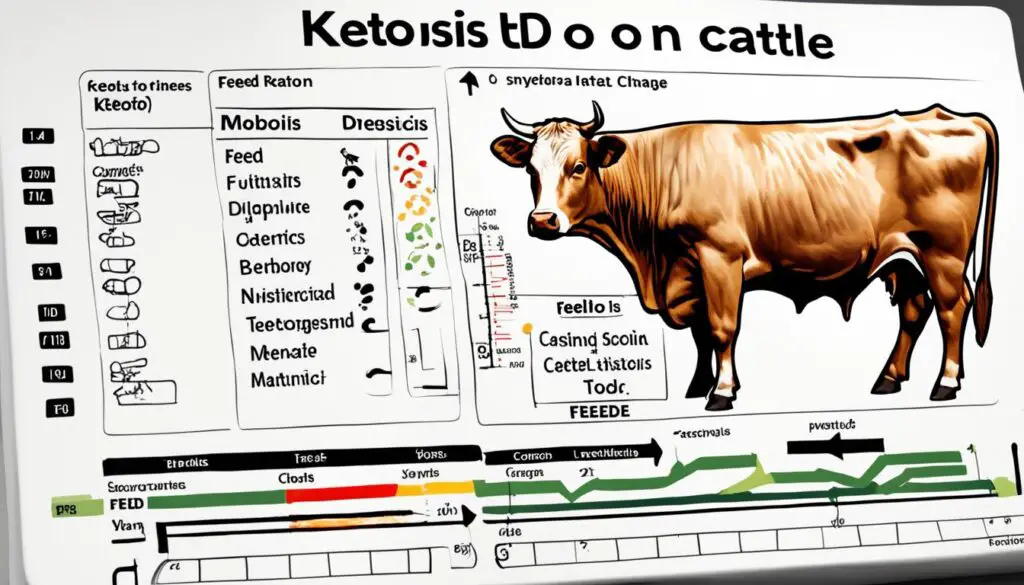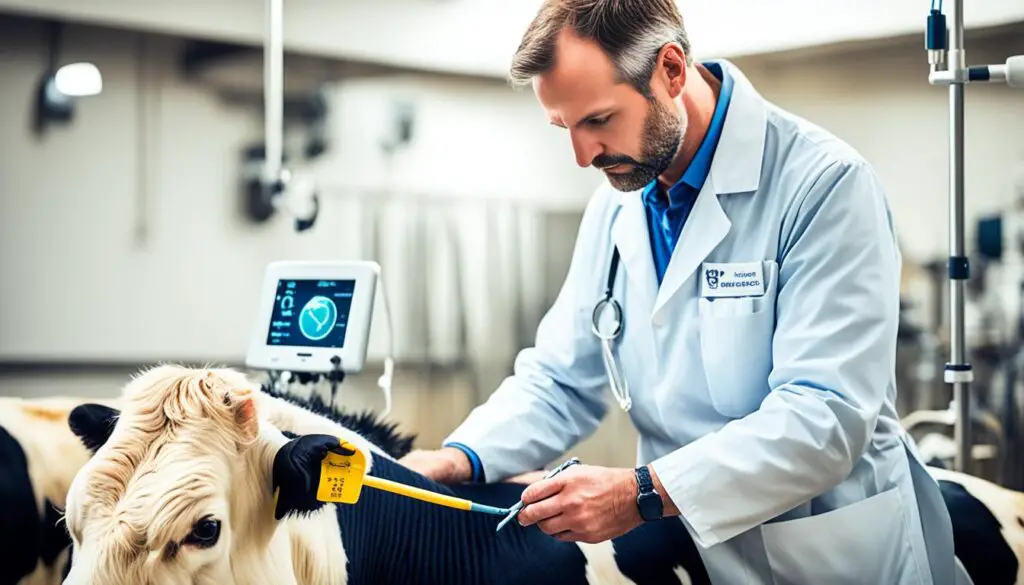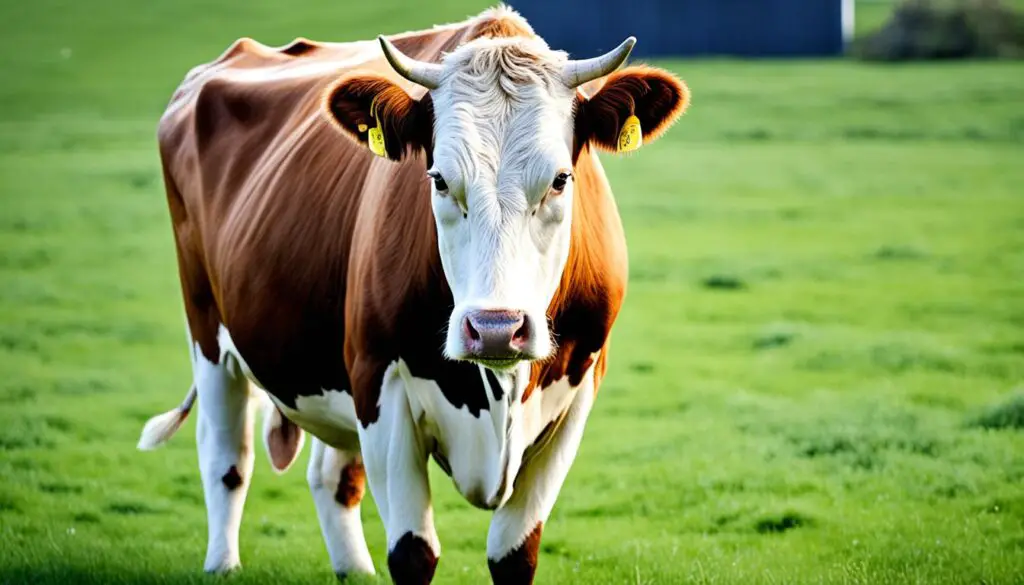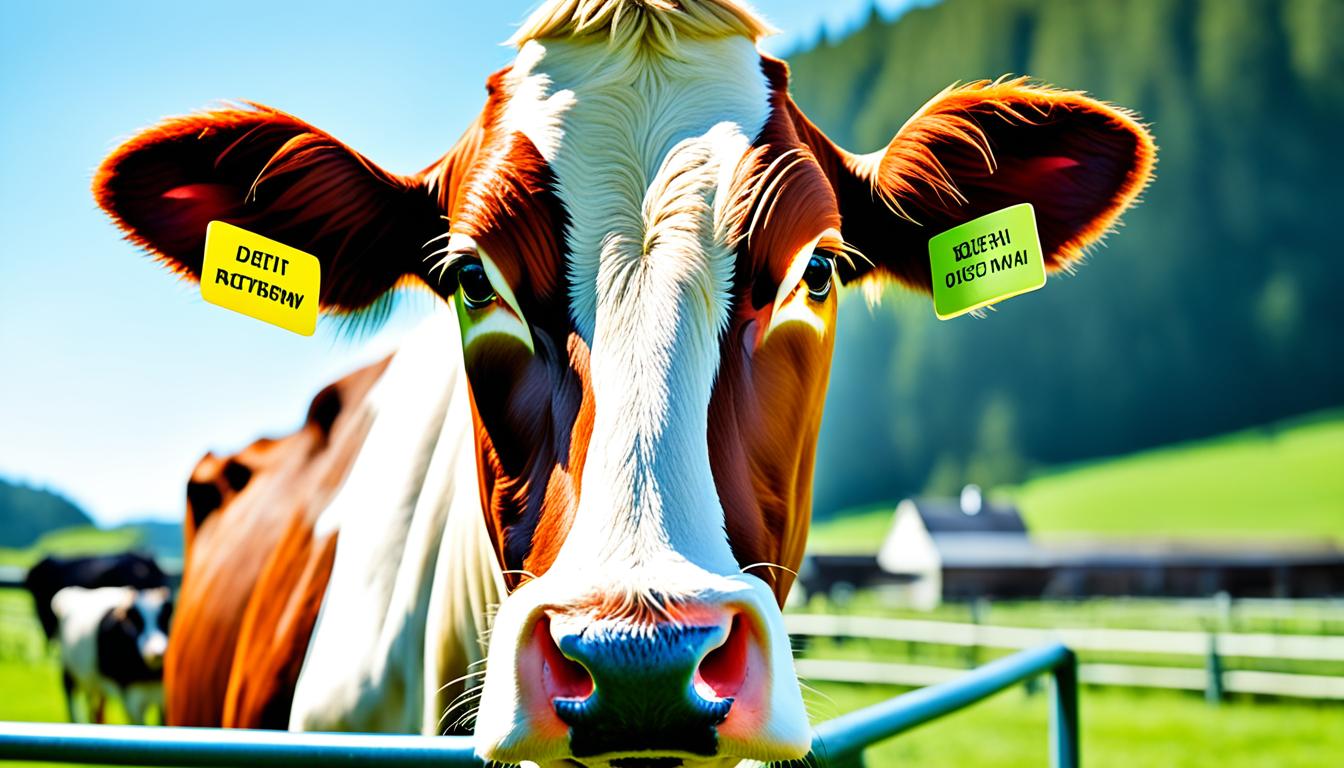In the world of dairy and beef cattle management, a staggering 40% of early-lactation dairy cows are affected by some degree of ketosis—a metabolic disorder that can have serious repercussions on cattle health and farm economics.
Navigating through the complexities of this condition requires a focused approach to ketosis management, balancing diets, and monitoring energy levels to maintain the well-being and productivity of the herd. As weighty as these statistics are, the operational impacts can be mitigated with strategic, informed measures designed to prioritize and preserve cattle health.
Delving into the management of ketosis in cattle requires not just diligence but also a blend of knowledge and pragmatic action.This informative guide provides you with expert insights essential to understanding, diagnosing, and addressing ketosis in dairy and beef cattle, grounded in the latest research and field-tested practices.
In this blog post guide, we will discuss and explore how to protect your herd and your business with effective strategies that resonate with the health needs of these valuable animals.
Understanding Ketosis in Cattle
Delving into the metabolic complexities of dairy and beef cattle reveals the pivotal role of energy balance in animal health. The occurrence of ketosis in cows is a multifaceted process, deeply rooted in the biological mechanisms of energy deficit and fat metabolism. It opens a window into understanding how diet, digestion, and physiology intertwine to maintain, or in some cases, disrupt bovine health.

What Is Ketosis?
At its heart, ketosis represents a metabolic state where negative energy balance prompts the body to seek alternative energy sources. The liver becomes a biochemical foundry, orchestrating ketone production from fatty acids. These ketones, meant to be secondary fuel, can accumulate to harmful levels affecting a cow’s productivity and health.
How Does Ketosis Occur in Dairy and Beef Cattle?
The road to ketosis in cattle is paved by an energy expenditure that outweighs consumption. During periods of high demand, such as early lactation, cattle often fail to intake sufficient energy, triggering a cascade of physiological responses.
This energy scarcity forces the mobilization of fat stores, releasing not only energy-rich molecules but also crafting the stage for ketone bodies to form when excess Acetyl-CoA amasses. This condition, characterized by a signature drop in milk yield, diminished appetite, and weight loss, is the telltale sign of an animal struggling to mainline its energy flow efficiently.
| Energy State | Physiological Response | Outcome |
|---|---|---|
| Negative Energy Balance | Fat Mobilization | Increased Free Fatty Acids |
| Limited Oxidation | Acetyl-CoA Buildup | Ketone Production |
| Ketosis Manifestation | Symptoms Appear | Reduced Milk Yield & Health Decline |
The science behind ketosis in cattle is an intricate dance of biological processes. To mitigate risks and foster cattle welfare, understanding these energy dynamics is instrumental. With knowledge as our guide, we can navigate the challenges of ketosis in cows, ensuring their productivity and vitality are sustained.
Risk Factors for Ketosis in Cows
Identifying risk factors for ketosis in cows is instrumental for employing the right preventive measures for ketosis. A multitude of determinants contribute to this metabolic disorder, where recognising and mitigating risks can prevent the escalation of symptoms and support overall cattle wellbeing.
Negative Energy Balance and Its Implications
Energy balance is a critical aspect for cattle health, especially when it comes to lactating or high parity cows. A negative energy balance can result in a state of hypoglycemia, instigating metabolic upheaval that can lead to ketosis.
This imbalance often occurs during the transition period post-calving, when the cow’s energy output surpasses her dietary intake, necessitating fat mobilization which predisposes her to ketosis.
Environmental and Dietary Contributors to Ketosis
Farm management practices, specifically diet composition and environmental conditions, are determining factors for ketosis. Inadequate feed quality and poor forage could predispose cattle to nutritional deficits, while colder climates may escalate energy demands, further aggravating the risk of a negative energy balance.
- Poor Forage Quality: Forages with low nutritional value can lead to insufficient dietary energy and compromised animal health.
- High Parity Cows: Older cows, which typically have a higher parity, are more susceptible to ketosis due to their extensive metabolic demands for milk production.
Interventions aimed at addressing diet quality and ensuring adequate energy intake are essential for the well-being of these animals. The nutritional status of lactating cows should be carefully handled to prevent reduced productivity and increased disease incidence.
| Risk Factor | Description | Preventive Measure |
|---|---|---|
| Negative Energy Balance | Occurs when energy demand during lactation exceeds intake. | Monitor diet to increase energy-rich feed components. |
| Poor Forage Quality | Low-nutrient forage leading to inadequate energy supply. | Test forage and supplement diet to optimize nutritional intake. |
| High Parity Cows | Older cows with greater lactation demands increasing the risk of ketosis. | Provide targeted dietary management for older lactating cows. |

A strategic approach to maintaining optimal cow health involves analyzing these risk factors and implementing individualized dietary programs that cater to energy demands, particularly in high parity cows and during periods of poor forage quality. Avoiding high-risk feeds like silage with elevated butyric acid content and ensuring a balanced diet can significantly reduce the incidence of ketosis.
Recognizing Ketosis Symptoms in Cattle
Being able to identify the onset of ketosis in cattle is key for farmers and veterinarians alike. A robust knowledge of ketosis symptoms not only can help in early diagnosis but also in implementing timely treatments to mitigate the adverse effects on cattle health and farm economics.
Recognizing these symptoms involves understanding the difference between clinical and subclinical presentation and being aware of the various physical and behavioral indicators associated with this metabolic disorder.
Clinical versus Subclinical Ketosis
In the sphere of dairy farming, discerning the nuances between clinical and subclinical ketosis is critical. While clinical ketosis is marked by visible and measurable symptoms, subclinical ketosis poses a covert threat, often going undetected without impairing the apparent health of the animal.
However, its impact on production and reproduction can be significant, making awareness and monitoring an integral part of livestock management.
Physical and Behavioral Indicators
When it comes to identifying ketosis symptoms in cattle, there are some clear physical and behavioral changes that can serve as red flags. These symptoms range from a notable reduced milk yield, a telltale sign of energy insufficiency, to the acetone breath emanating from the cattle, indicative of excessive ketone production. Furthermore, caregivers should observe for aggressive behavior which could signal discomfort due to the underlying metabolic stress.
- Reduced Milk Yield: One of the earliest and most measurable symptoms of ketosis is a drop in milk production.
- Acetone Breath: A distinct sweet and fruity scent from the breath or urine of cattle is a characteristic signal of ketosis.
- Aggressive Behavior: Changes in temperament, such as increased irritability or aggressiveness, can be an expression of the physical discomfort caused by ketosis.
Understanding and promptly responding to these signals is essential for maintaining the wellbeing of dairy herds and ensuring the economic viability of dairy operations.
Diagnosing Ketosis in Dairy and Beef Cattle

Determining the presence of ketosis in cattle is critical for implementing timely treatments and ensuring the wellbeing of the herd. In both dairy and beef cattle, a reliable diagnosis hinges on measuring the concentration of ketones in bodily fluids. This process involves a few standard methods:
- Blood Ketone Levels: This method is considered a gold standard for diagnosing ketosis. Blood samples are taken and analyzed for beta-hydroxybutyrate (BHB), the predominant ketone body during ketosis.
- Urine Ketone Detection: While less specific than blood testing, urine tests can indicate ketone excretion and serve as a quick field test for ketosis.
- Milk Ketone Tests: Specially designed milk ketone strips can provide a semi-quantitative assessment of ketosis in lactating cows, combining convenience with reasonable accuracy.
Selecting the most suitable method may depend on available resources and the prevalence of ketosis within a given herd. Subclinical ketosis, a less overt form of the condition without visible symptoms, typically requires closer surveillance through blood or milk ketone testing to prevent progression to clinical ketosis. Farms may employ a combination of these diagnostic methods to maximize early detection, as outlined below:
| Diagnostic Method | Advantages | Limitations | Best for |
|---|---|---|---|
| Blood Testing | Highly specific and quantitative | Requires blood draw and laboratory analysis | Confirming diagnosis and measuring severity |
| Urine Testing | On-site rapid screening | Less specific, affected by dehydration | Field diagnosis in symptomatic animals |
| Milk Testing | Convenient for lactating cows, can be batch-tested | Semi-quantitative, may miss early cases | Routine surveillance in dairy herds |
The goal of diagnosing ketosis is not only to treat affected animals but also to tailor management practices to prevent onset in the herd. A clear understanding of ketosis diagnosis in dairy and beef cattle, alongside insights into blood ketone levels, urine, and milk excretion of ketones, is a cornerstone of successful cattle health management.

Managing Ketosis in Dairy and Beef Cattle
Successfully managing ketotic cows entails a multi-pronged approach that combines immediate medical interventions with strategic nutritional adjustments.
Treatment is aimed at swiftly restoring the energy balance, and alleviating the clinical signs of ketosis, to return cattle to their optimal production levels. Let’s delve into the effective treatments and interventions available for ketosis in cattle.
Ketosis Treatment Options
The initial step in ketosis treatment is to tackle the immediate glucose deficiency that is central to the condition. This typically involves the administration of glucose supplements which offer a quick source of energy for cattle in need. Glucose can be delivered orally or intravenously depending on the severity of the cow’s condition and the urgency of the situation.
Pharmaceutical and Nutritional Interventions
For longer-term management, pharmaceutical options such as corticosteroids are often employed. These help to stimulate glucose production and reduce the ketone body formation in the liver.
Nutritional support plays a vital role as well, and it involves integrating glucogenic substances that encourage natural glucose synthesis. Consequently, a combined treatment regimen is critical for both immediate and sustainable ketosis management.
| Treatment Strategy | Description | Benefits |
|---|---|---|
| Glucose Supplements | Direct glucose supplementation to correct hypoglycemia | Provides immediate relief from energy deficit |
| Corticosteroids | Pharmaceutical agents that promote gluconeogenesis | Supports longer-term management of glucose levels |
| Nutritional Approaches | Inclusion of glucogenic precursors in the diet | Enhances energy balance and supports overall health |
Understanding and implementing these treatment protocols are essential for farm managers and veterinarians alike in effectively managing ketotic cows. It’s a delicate process that balances expedient medical care with conscientious nutritional planning.
Feeding Strategies for Ketosis Prevention
To maintain the health and productivity of dairy cattle, especially during the transitional period, it is crucial to implement informed feeding strategies for ketosis prevention. These strategies encompass a variety of approaches aimed at optimizing nutrient consumption and adjusting diets to reduce the risk of ketosis.
Focus on comprehensive transitional cow management and integrating high-fiber diets not only aids in keeping at-risk cattle in peak condition but also fortifies the cattle’s defense against potential metabolic disorders.
Optimizing Energy Intake Post-Calving
Immediately after calving, cows experience a significant rise in energy requirements to sustain the demands of lactation. It’s essential to provide an energy-dense diet to prevent negative energy balance during this time.
As part of effective transitional cow management, dairies should reassess and possibly increase the energy content of post-calving rations to support the sudden increase in energy output.
Adjusting Dietary Components for At-Risk Cattle
Adjusting the dietary components to prevent ketosis is a precision task that takes into account the specific needs of high-risk cattle. Key nutrients like fermentable carbohydrates and certain fat sources can be critical in managing energy levels. The introduction of high-fiber diets helps maintain rumen health and function, preventing metabolic disruptions that could lead to fat mobilization and subsequent ketone production.
The following table outlines the essential dietary adjustments and supplements for at-risk cattle to prevent ketosis:
| Nutrient/Supplement | Benefits | Recommendation |
|---|---|---|
| High-Fiber Forages | Improves rumination and saliva production, stabilizing rumen pH | 60% of dry matter intake |
| Fermentable Carbohydrates | Boosts energy levels, supports propionate production | Balance to meet but not exceed energy requirements |
| Niacin | Plays a role in energy metabolism, may reduce fat mobilization | 6-12 grams per head per day |
| Propylene Glycol | Provides a direct source of glucose precursor | 300-400 ml per head per day during the first week post-calving |
To address the complexities of a successful feeding program, it’s recommended to work closely with a nutritionist who can tailor the diet to the herd’s specific needs while keeping an eye on overall metabolic health. Employing these strategies ultimately contributes to the well-being of the cattle and the economic efficiency of the dairy operation.
Addressing the Impact of Body Condition Score (BCS)
Maintaining an optimal Body Condition Score (BCS) is paramount in preventing the onset of ketosis in dairy cattle. Achieving a balance in the BCS for cows can be challenging, especially when considering the diverse physiological demands throughout their lactation and dry periods.
The implications of BCS on overall cow health and subsequent lactation performance are significant, as is the current industry focus on dry period management and improved nutritional strategies.
Monitoring and Managing BCS for Ketosis Management
Consistent monitoring of BCS offers a proactive approach to ketosis management. This strategy should begin well before the transition into lactation, with particular attention given during the dry period. Adjusting feed rations to maintain a BCS within the optimal range can have a profound effect on minimizing the energy deficiencies that contribute to ketosis.
A BCS that is too high (over-conditioned cows) or too low can both be indicators of potential health concerns:
- Over-conditioned cows are at a higher risk of developing metabolic disorders such as ketosis.
- Under-conditioned cows may lack the necessary energy reserves to meet the demands of early lactation, leading to an increased chance of negative energy balance.
Thus, the careful and regular evaluation of BCS is an indispensable component of holistic herd health management.
Effects of Over-Conditioning on Ketosis Risk
Over-conditioned cows, particularly during the dry period, are at a heightened risk of developing fatty liver syndrome and ketosis. To mitigate these risks, tailored dry period management practices must be implemented. This includes dietary adjustments that provide sufficient nutrition without promoting excessive weight gain.
| BCS Range | Over-Conditioned Cow Risks | Recommended Actions |
|---|---|---|
| 4.0 – 5.0 | Increased risk of ketosis and fatty liver | Reduce energy density of the diet |
| 3.0 – 3.75 | Moderate risk, possible weight adjustments needed | Monitor and adjust diet to maintain score |
| 1.0 – 2.9 | Low risk of over-conditioning; monitor for under-conditioning | Consider increasing energy density of the diet |
It is clear that a strategic approach to managing the BCS of cows will significantly benefit their health and productivity. By preventing over-conditioning and ensuring proper nutrition during the crucial dry period, dairy farmers can effectively reduce the incidence of ketosis and maintain an efficient, healthy herd.
Enhanced Monitoring for Ketosis Prevention
Preventing ketosis in dairy and beef cattle is a paramount concern for producers aiming to maintain animal welfare and operational profitability. Incorporating enhanced monitoring practices serves as a cornerstone for early detection and management of this metabolic disorder.
By implementing strategic screening protocols, farmers can identify at-risk animals promptly and intervene before the condition exacerbates into clinical ketosis.
Use of Blood and Milk Ketone Testing
Routine blood and milk testing for ketone levels is a critical component of the fresh cow screening protocol. Elevated ketone levels can signify the onset of subclinical ketosis, allowing for timely measures to be taken. Milk testing for beta-hydroxybutyrate (BHBA), a type of ketone, is particularly useful because it can be integrated seamlessly into the regular milk sampling routine. Furthermore, blood tests provide a direct assay of metabolic status and can further substantiate the presence of ketosis.
Implementing a Fresh Cow Screening Protocol
The development of a fresh cow screening protocol is a proactive measure that can significantly reduce the incidence of ketosis in herds. This protocol involves regular monitoring of cows immediately post-calving, a period when they are most vulnerable to subclinical ketosis detection.
Through the integration of this vigilant screening process into the herd management practices, farmers are equipped with the data necessary to make informed decisions that bolster cattle health and optimize production efficiency.

